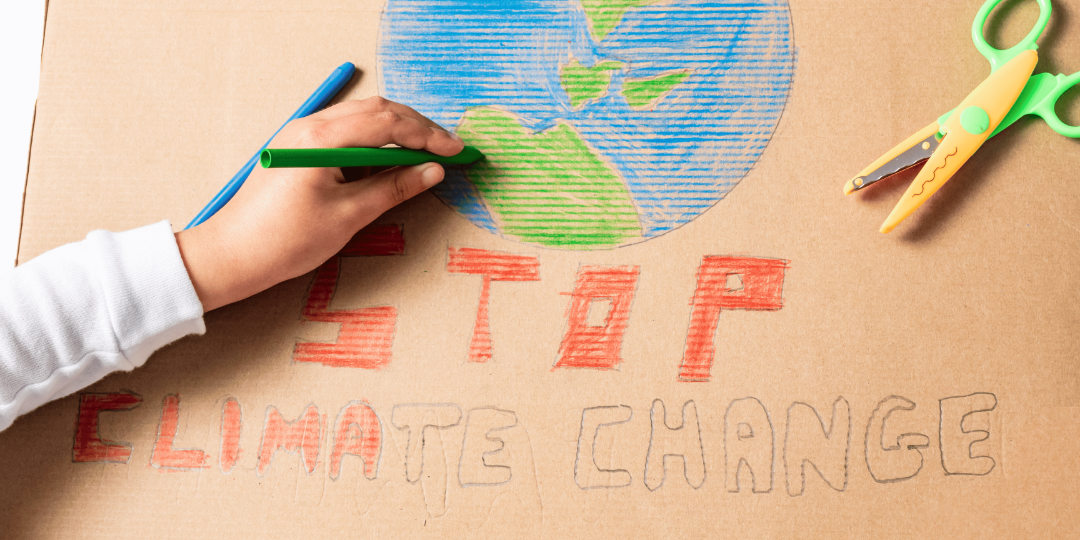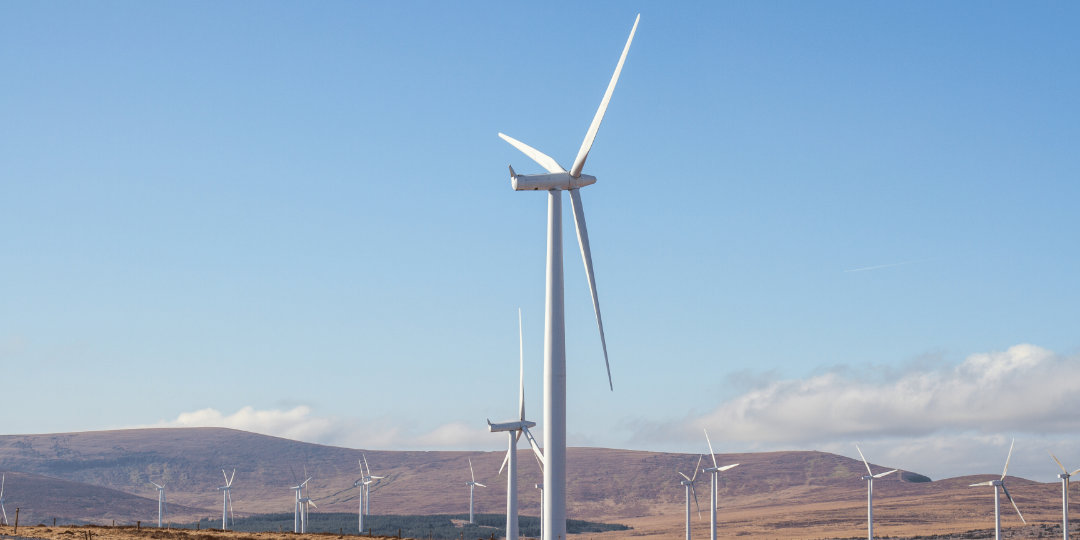Education

Education is a core aspect of the Ballinlee Green Energy project. As well as providing educational resources, we will offer expert led tours around wind farms for members of the neighboring community and local schools. To arrange, contact us via the button below.
Climate Change

What is Climate Change?
- Climate is the average weather over many years.
- Climate change is a shift in those average conditions.
- The Earth is now in a period of rapid climate change, with global temperatures rising.
What are the causes?
- There have always been natural variations in the climate, but global temperatures are rising now,
because of human activities. - The world is about 1.2°C warmer than before people started using oil, gas and coal to power factories
and transport, and to heat homes. - The greenhouse gases released by burning these fossil fuels trap the Sun’s energy.
How have human activities influenced climate change?
- Humans are increasingly influencing the climate and the earth’s temperature by burning fossil fuels, cutting down forests and farming livestock.
- This adds enormous amounts of greenhouse gases to those naturally occurring in the atmosphere, increasing the greenhouse effect and global warming.
- The amount of one greenhouse gas in the atmosphere – CO2 – has risen about 50% since the 19th Century and 12% in the past two decades.
- Another source of greenhouse gases is deforestation. When trees are burned or chopped down, the carbon they normally store is released
the greenhouse effect
The Greenhouse Effect is a natural occurrence that is essential to human life. Energy from the sun warms the Earth as it is trapped in the atmosphere. Not all the energy from the sun is trapped, some of it is reflected into space. This process of absorbing and reflecting energy warms the planet to an average of 15 degrees Celsius, this ensures that life on earth is possible. Rapid changes to the amount of greenhouse gases in the atmosphere is resulting in global warming, where more of the Sun’s energy is absorbed and less energy is reflected into space.
Changes to the composition of the atmosphere is a natural process. The Earth has gone through cycles of extreme cold, the Ice Age, and warmer eras, the Carboniferous period, where dense and swampy forests gave rise to large deposits of peat, which, over time transformed into coal. The growth of giant tropical forests removed huge amounts of carbon dioxide (CO2) from the atmosphere and stored it as coal deposits, the same coal that we burn today.
The industrial revolution, saw the growth in coal consumption which gave rise to unprecedented levels of air pollution. This was followed by the production of industrial chemicals, increased production of consumer goods and intensification of agriculture. All these activities have something in common – they are energy intensive. Until recently most of our energy demands have been satisfied by our reliance on fossil fuels
Renewable Energy

Government Targets
The requirement for climate action and energy security has led to an increased focus on renewable energy generation in Ireland. The transition to a low carbon electricity system, based on renewable energy and storage, is a key pillar of Project Ireland 2040 – National Planning Framework. Underpinning this, is our obligation to increase renewable energy from 30% to 80% by 2030. It is recognised that wind energy is a viable option for Ireland’s transition to renewable electricity, whilst strengthening our energy security and meeting EU climate targets.
Renewable Energy and Agreed Targets
Key targets for 2030, at least:
- 40% cuts in greenhouse gas emissions (GHG) (from 1990 levels)
- 70% renewable electricity
- 32.5% improvement in energy efficiency
According to a report published by the SEAI in 2020¹, Ireland ranks second last out of 28 EU countries and has missed the 2020 targets, making it more difficult to meet 2030 and 2050 targets.
| Key Requirements to reach Targets | 2030 Target |
| Onshore Wind | 9 GW |
| Offshore Wind | 5 GW |
Table 1: Wind energy targets to 2030
Renewable Energy – Wind Power
Onshore wind energy projects form a key part of the Government’s plan to enhance clean electricity generation, meet Ireland’s environmental targets and move to a more secure energy future. In Ireland, electricity generation is the 3rd largest fossil fuel expending sector, with carbon dioxide (CO2) the primary GHG released. Wind turbines do not emit GHGs while operational. It takes a turbine just three to six months to produce the amount of energy that goes into its manufacture, installation, operation, maintenance and decommissioning after its 25-30 year lifetime². Therefore, wind energy can play a major role in reducing GHGs.
Economic benefits from wind energy include employment, community benefit schemes, lower bills arising from reduced reliance on imported fossil fuels, a stable income for landowners who lease their land for wind farm development, income for local authorities through rates, and increased competition in the energy market which helps to lower costs for end users³.
| Wind Energy Impacts | 2020 | 2030 Target |
| Capacity (MW’s) | 4,200 | 8,200 |
| Total Industrial Output | €1.1bn | €1.5bn |
| Additional Gross Value Added from the sector’s activities | €410m | €550m |
| Jobs throughout the sector and supply chain | 5,130 | 7,020 |
| Total payments in incomes to workers across the supply chain | €225m | €305m |
| Contribution to local authority rates | €45m | €100m |
Table 2: Wind energy impacts to 2030
References
- SEAI (2020) Renewable Energy in Ireland
- Baringa (2021) Endgame -A Zero Carbon Electricity Plan for Ireland
- KPMG (2021) Economic Impact of Onshore Wind in Ireland
